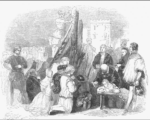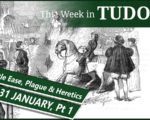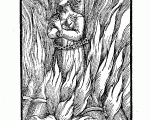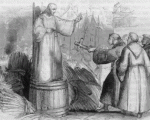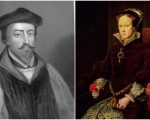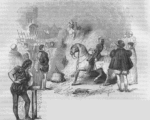
On this day in 1556, Bartholomew Green, a Protestant lawyer, paid the ultimate price for his beliefs: death.
Burned at the stake at Smithfield alongside six others, Green’s story is one of unshakable faith, defiance, and courage in the face of persecution.
But how did this Oxford-educated lawyer end up on the wrong side of Queen Mary I’s laws? What role did secret communions, controversial letters, and his refusal to attend Catholic mass play in his downfall?
Bartholomew Green, or Bartlet Green as he’s sometimes known, was a gentleman and lawyer who found his faith while studying at Oxford. It was there, while listening to lectures by the Protestant theologian Peter Martyr, that Green, as martyrologist John Foxe describes, “saw the true light of God’s gospel.”
[Read More...]






